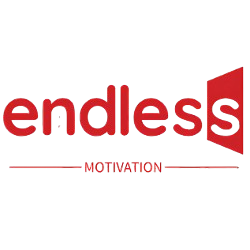Have you ever noticed how certain phrases seem to echo in your mind for years? A simple “This too shall pass” during a difficult moment. A sharp “Know thyself” when you’re feeling lost. A quiet “Be here now” when anxiety strikes.
Meanwhile, that brilliant 300-page self-help book you read last month? You’d struggle to summarize three key points.
This isn’t a failure of memory—it’s a feature of how human cognition works. In an age of information overload, the most powerful ideas aren’t necessarily the most comprehensive ones. They’re the ones that travel lightest. They’re what we might call “wisdom bombs”—compact packages of insight that detonate exactly when and where needed.
This guide explores the art and science of sticky wisdom. We’ll uncover why your brain prefers seven words to seven chapters, provide a comprehensive collection of these cognitive shortcuts, and show you how to build your own personal “quote ecosystem” for lasting personal transformation.
The Neuroscience of Stickiness: Why Less Really Is More
Cognitive Architecture and the Magic Number Seven
In 1956, psychologist George Miller published one of the most cited papers in psychology: “The Magical Number Seven, Plus or Minus Two.” He discovered that the average person’s working memory can hold about seven items. A powerful short quote fits perfectly within this cognitive sweet spot—it’s mentally portable in a way that lengthy arguments simply can’t be.
The Peak-End Rule and Emotional Tagging
Nobel Prize winner Daniel Kahneman’s research shows we remember experiences based on their peak emotional moments and how they end, not their duration. Short quotes work similarly—they capture the emotional peak of wisdom without the boring parts. Your brain tags them as significant because they deliver maximum insight with minimum cognitive effort.
The Processing Fluency Effect
Your brain prefers information that’s easy to process. Short quotes are cognitively fluent—they feel familiar, easy to remember, and true. This fluency itself creates a positive feeling that makes the wisdom more persuasive and memorable.
The Anatomy of an Unforgettable Quote
Not all short phrases are created equal. The most powerful ones share specific characteristics:
1. Concrete Over Abstract
- Weak: “Achieve personal growth”
- Powerful: “Fall seven times, stand up eight”
2. Emotional Resonance
- Weak: “Consider alternative perspectives”
- Powerful: “You are the sky, everything else is weather”
3. Action Orientation
- Weak: “Implement productivity strategies”
- Powerful: “Just do it”
4. Pattern Interruption
- Weak: “Practice mindfulness”
- Powerful: “This is water” (David Foster Wallace)
The Mental Toolkit: 200+ Quotes Organized by Psychological Function
Cognitive Reframing Tools
For when your thinking needs a hard reset
- The obstacle is the way
- Perception is reality
- What you resist persists
- Everything is figureoutable
- Problems are solutions in work clothes
- There are no mistakes, only lessons
- Your thoughts create your reality
- Reframe or remain the same
- Is this thought useful?
- What if this is happening for me?
Emotional Regulation Tools
For managing overwhelming feelings
- Feel it to heal it
- This too shall pass
- Emotions are data, not directives
- Name it to tame it
- The storm will pass
- All emotions are temporary
- Breathe through it
- Soften into the feeling
- This is a wave, ride it
- I am not my emotions
Motivation and Action Triggers
For overcoming inertia and procrastination
- Start before you’re ready
- Done is better than perfect
- Action cures fear
- Small steps, big wins
- Momentum creates momentum
- Do it scared
- The way out is through
- Motion precedes emotion
- Just show up
- One thing at a time
Resilience Builders
For bouncing back from setbacks
- No rain, no flowers
- Pressure makes diamonds
- Smooth seas don’t make good sailors
- What doesn’t kill me makes me stronger
- Fall seven, rise eight
- This won’t break me
- Tough times don’t last, tough people do
- Stand up one more time
- The comeback is stronger than the setback
- I can do hard things
Presence Anchors
For returning to the here and now
- Be here now
- Wherever you are, be all there
- This moment is your life
- Now is all there is
- Breathe in, breathe out
- Ground yourself in the present
- The power of now
- Presence over presents
- Here, not there
- Arrive in this moment
Identity and Belief Shifts
For rewriting your self-story
- I am enough
- My story, my rules
- Be yourself; everyone else is taken
- I am becoming
- Past me, present me, future me
- I choose my beliefs
- My worth isn’t negotiable
- I am the author
- Redefine possible
- Identity shapes reality
Building Your Personal Quote Ecosystem
Phase 1: Diagnosis and Selection
Most people choose quotes randomly. Instead, conduct a “mental audit”:
Identify Your Recurring Mental Patterns:
- What negative thought loops do you experience daily?
- What situations trigger unhelpful emotional responses?
- Where do you consistently get stuck?
Match the Medicine to the Illness:
- If you struggle with perfectionism: “Done is better than perfect”
- If you battle anxiety: “This too shall pass”
- If you fear failure: “Fall seven, rise eight”
Phase 2: Strategic Implementation
The Quote Stacking Method:
Create sequences for common challenges:
For Morning Anxiety:
- “This moment is enough”
- “Breathe in courage, breathe out fear”
- “I can handle what comes”
For Creative Resistance:
- “Start before you’re ready”
- “Progress over perfection”
- “Create without criticism”
Environmental Design:
- Context-Specific Placement: Put quotes where you need them most
- Digital Integration: Use as phone wallpapers, browser home screens
- Physical Anchors: Place on mirrors, desks, car dashboards
Phase 3: The Integration Ritual
Morning Activation:
- Read your selected quotes aloud
- Write them while considering your day ahead
- Visualize applying them to anticipated challenges
Evening Reflection:
- Which quotes did you use today?
- How did they change your experience?
- What adjustments are needed?
Beyond Personal Use: Quotes in Leadership and Culture
The Leadership Leverage
Great leaders understand that culture is built on shared language. A well-chosen short quote can:
- Define team values (“Team first”)
- Set performance standards (“Better every day”)
- Guide decision-making (“Customers first”)
- Build resilience (“No excuses, only solutions”)
The Meeting Mantra
Start meetings with a relevant quote to set tone and intention:
- For planning: “A goal without a plan is just a wish”
- For problem-solving: “Every problem contains its own solution”
- For innovation: “If it ain’t broke, improve it anyway”
The Science of Creating Your Own Sticky Wisdom
The Formula for Crafting Memorable Quotes
- Insight First: Start with a genuine, hard-won realization
- Simplify Ruthlessly: Cut every unnecessary word
- Add Rhythm: Use parallel structure or rhyme
- Test for Stickiness: Does it feel true and memorable?
Examples in Action:
Complex Idea: “I’ve found that consistent small improvements compound into remarkable results over time”
Sticky Quote: “Small steps, big wins”
Complex Idea: “Our interpretation of events determines our emotional response more than the events themselves”
Sticky Quote: “Perception is reality”
The Ripple Effects: How Short Quotes Create Compound Change
The Micro-Habit Effect
Each time you use a quote to shift your thinking, you’re building neural pathways that make future shifts easier. It’s like mental muscle memory.
The Identity Reinforcement
Quotes like “I am enough” or “I do hard things” aren’t just positive statements—they’re identity claims. Repeated consistently, they reshape your self-concept at a fundamental level.
The Decision Framework
Having a library of mental quotes gives you a decision-making framework for moments of stress or uncertainty. Instead of panicking, you can access “The obstacle is the way” or “This too shall pass.”
Your 7-Day Quote Transformation Challenge
Day 1: Identify your top 3 mental challenges
Day 2: Select one quote for each challenge
Day 3: Implement environmental design (place quotes strategically)
Day 4: Practice quote stacking for one specific situation
Day 5: Create one original quote based on your experience
Day 6: Teach someone your favorite quote and why it matters
Day 7: Review and refine your personal quote ecosystem
Conclusion: The Quiet Revolution of Conscious Language
The words we carry in our minds shape the lives we create in the world. In choosing our mental quotes consciously, we’re not just engaging in positive thinking—we’re engaging in reality architecture. We’re selecting the building materials for our inner world.
The power isn’t in the quotes themselves, but in the space they create between stimulus and response. That tiny pause where a quote arises—”Be here now,” “Progress over perfection,” “This too shall pass”—is where we reclaim our agency. It’s where we stop being victims of our circumstances and become architects of our experience.
The revolution won’t be televised. It will be internalized. It will be whispered in seven words or less. And it starts with choosing which seven words you’ll carry with you today.
Your Mission: What’s the one quote you need to carry with you this week? Share it in the comments along with the specific situation where you’ll use it. Let’s build a living library of applied wisdom together.

